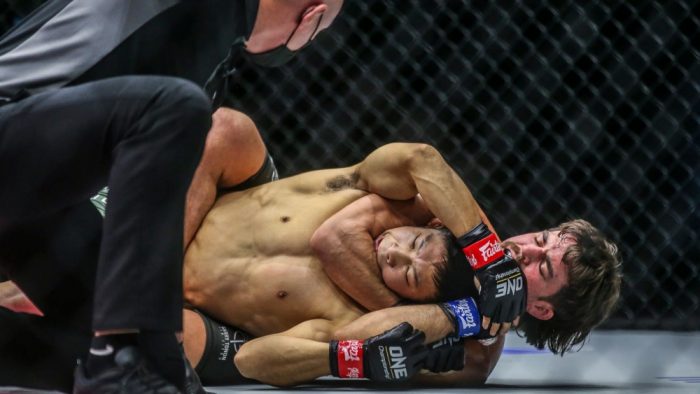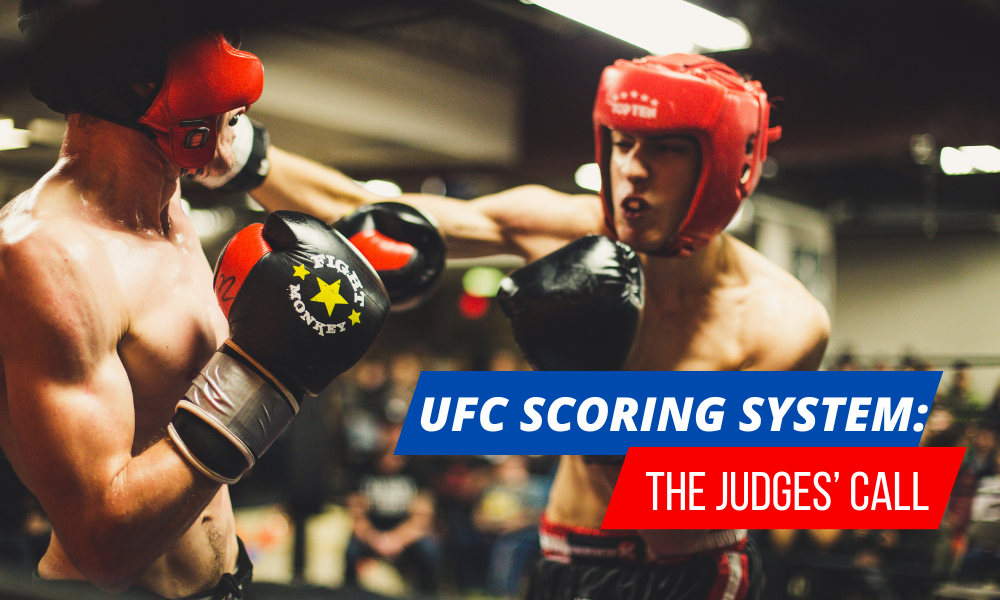Learn about the UFC Scoring System and how judges make their calls. Understand the criteria used to score each round of a fight and how it can affect the final outcome. Gain insight into the intricacies of MMA scoring and make informed predictions for your favorite UFC events.
Even those patriotic and immense-loving UFC fans are often unknowledgeable when it comes to these terms.
Therefore, I have taken the initiative to go over them one by one. Now, shall we?

The UFC Scoring System
In the UFC, the judges adhere to the so-called 10-point system. This UFC Scoring System is applied in most, if not all, UFC fights in the octagon.
The fighters’ scores are assessed at the end of each round. In simpler terms, the fighter who has successfully owned the game during that round will receive a perfect score of 10 whereas the loser will have nine.
On rare occasions, the judges can come up with a score of a perfect 10 for both fighters. It is also possible for a fighter to receive eight points if he or she has been overpowered for most of the game.
As a standard, the scores accumulated by each fighter at the end of the fight will be the deciding factor as to who wins and who loses. Pretty understandable, right?

The Judge’s Criteria
Just like any other competition, there is a pre-established criterion for judging. In UFC, they also follow the same practice, although the criteria listed are different – well, as they should.
Previously, I talked about the UFC scoring system but that’s just all about it. Now, I will explain how the judges even come up with their scores and how each round is evaluated.
To give you a short overview, the following factors or aspects are used to determine the winner; effective striking and grappling, effective aggressiveness, and control of the fighting area.
Who Strikes and Grapples More Effectively?
This question will determine the fighter’s counts of successful legal strikes. The counts for takedowns are reversals may also be accounted for it. Lastly, a fighter’s position advancements will be thoroughly considered, as well as the fighter’s or the opponent’s submission attempts.
Whose Aggressiveness is More Effective
This question will most likely focus on the fighter’s determination, energy, and attitude throughout the fight. For instance, a fighter who chases down his or her opponent with the full intention of attacking will be more favorable as per the judges’ evaluation.
Execution of action such as throwing a shot or shooting for a take-down will also be more favorable. Generally, the fighter who moves forward actively, and not passively, will have a higher chance to win the game at the end of the round.
Who Controls the Octagon and The Pace of the Fight
This question is pretty much obvious. The fighter who displays control or dominance in the center of the octagon will most likely win the judges’ favor. Particularly if a fighter is persistently pushing the opponent against the cage or outwards.
Fighters who can exhibit their capacity to overpower the opponent are both amazing and dangerous in their way. They can dictate how the game should go as they control the pacing and rhythm of the fight.
Fight Outcomes
Unanimous Decision
As the term unanimous suggests, this decision is fully agreed upon. In the context of UFC, the three judges all come up with one winner. For instance, they scored a win for one fighter with two to three different points at most.
Majority Decision
This occurs when the three judges don’t agree on one, single, and unified decision. Therefore, the rule of the majority is taken into consideration.
For instance, if judge A scored a loss for a certain fighter, but both judge B and C scored a win for the same fighter – then the fighter will rightfully take his or her place as the winner. It is one against two situations, you know.
Split Decision
Here we have two judges scoring a win for one fighter, while the other judge scored a win for another fighter. Hence, it is a split decision. Take note, this is different from a majority decision.
Technical Decision
Truth be told, this is a relatively rare case during UFC fights. This only happens when an illegal shot is unintentionally executed causing a fighter to stop.
This can be a pretty touch for the judges as the fight is completely halted and the fight’s outcome will be based solely on the judges’ technical evaluation.
Unanimous Draw
This happens when all three judges could not decide who among the fighters should claim the victory at the end of the night. Therefore, they declared the match a draw.
Majority Draw
This is similar to the one above but only two judges declare it a draw. The third judge can pick a winner, while the last one picks either of the fighters as his winner. I know, it can get confusing, right?
Split Draw
Another draw outcome that we have here is this so-called split draw. All judges picked entirely different outcomes.
Suppose we have judge A who scored a win for the fighter, while judge B scored a win for the second fighter. And then comes along judge C who scored the entire match as a draw.
Technical Draw
For the last one, let’s say that the fighter fell due to an accidental or illegal injury. That is pretty much the same as the technical decision.
However, the judges cannot determine a winner so they score the match as a draw instead.
Final Words
The UFC Scoring System is created to establish fairness among the fighters. This is also used to ensure that the fighters’ skills and strengths are properly awarded.
I know that there are many confusing terms, jargon even, that were put above. But if you want to learn about them, then you’d give no excuses. Right?
For what it’s worth, I think it is important to take note that the UFC organization is making sure that there will be no lapses when it comes to assessing the fighters’ abilities.

